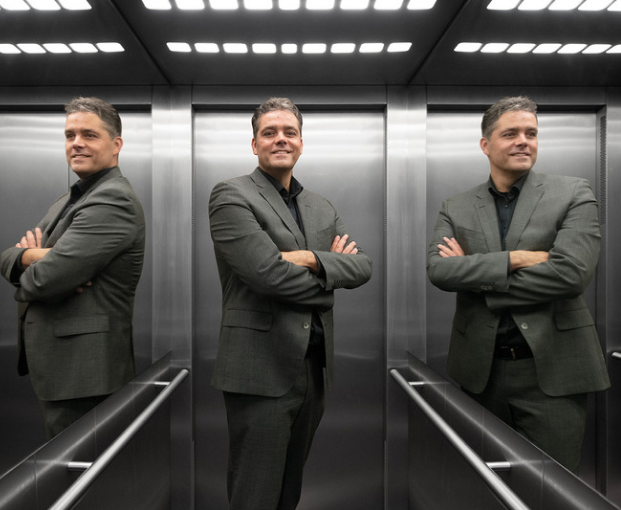
Jochem Wit is renowned as the guru on vertical transport systems in high-rise buildings in the Netherlands. Aside from structural support lifts are also the life pulse of buildings, getting people around spaces quickly and easily.
" Lifts are the life pulse of buildings. They are about getting people around so you need to think like a behavioural psychologist
“Lift cores are the aorta and backbone of a building. They are essential for internal mobility of goods and people,” says Jochem. “I find this such an interesting field since all disciplines come together here. Vertical systems need to be carefully considered early in the design phase by the architect, the structural engineer and the logistics consultant. You can’t simply add an elevator after completion or enlarge it to increase capacity. “
Higher and more multifunctional
According to Jochem, his profession has changed rapidly in recent years from a technical perspective with an upward trend for high rise and multifunctional buildings. This requires a thoughtful strategy. “With increased demand for higher and multifunctional buildings you have to consider which flows to combine in lift design, alongside capacity. You will probably want a conference guest in a separate elevator from a guest using the sauna. In hospitals, you’d want to keep visitors separate from emergency room or waste streams.”
Organizational measures
It’s about striking the balance between capacity and waiting times. “The question to ask is what performs and fits better: a few large elevators or several small ones?” Flexibility and security also play a role.
Creative strategic thinking needs to solve issues where elevators become a bottleneck in moving people and goods. “Even though in existing buildings there is usually not much you can do structurally, there are plenty of technical and organizational options. The mandatory use of the stairs for the lower floors, separating incoming and outgoing traffic flows to prevent cross traffic in the lobbies. Think about reducing peak loads by staggering working hours and having lunch at the workplace.”
Behaviour
Sometimes lift design entails thinking like a behavioural psychologist. “You need to consider the needs and discipline of people and anticipate user behaviour by putting yourself in their shoes. There will always be people trying to crack the system you have designed.” Another point to consider is that frequency of use influences user learning curves. “In an office building the user learning curve is not as steep as in a hospital or hotel for example.”
Combined with the opportunity to apply his deep knowledge of vertical transport systems, Jochem enjoys the multi-disciplinary engineering work and breadth of project challenges at Deerns.



